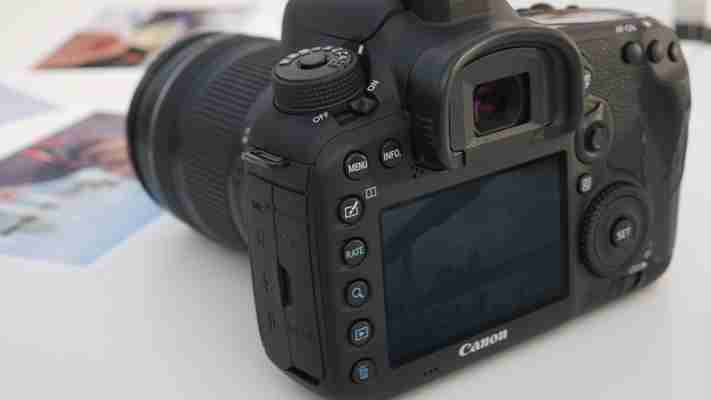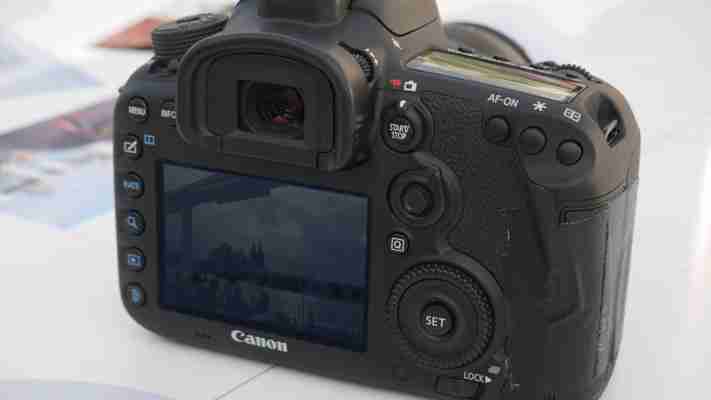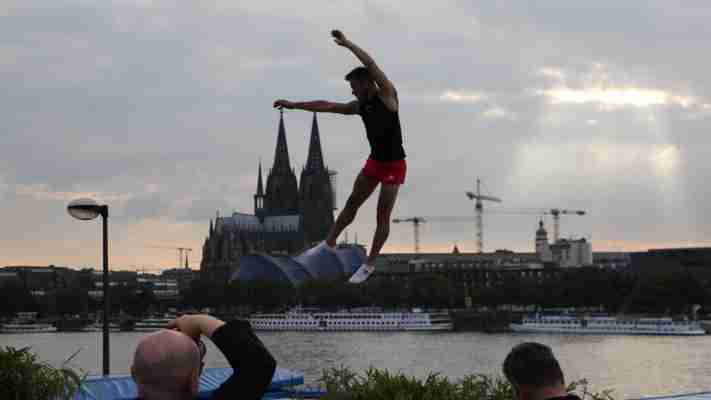Canon announced the 7D Mk II , the successor to the already impressive 7D , yesterday at its Photokina press conference. Without making the (expensive) jump to full-frame, the Mk II is about as fully-featured a digital SLR as it's possible to get from Canon, so naturally we couldn't wait to put one through its paces. We got the chance last night, ready to bring you an initial first look.
IMPORTANT: The test photos shown here were taken using a pre-production version of the 7D Mk II, so can't give us a definitive guide to image quality - instead they merely give us an indication of what the camera will be like once it gets its final firmware.
With that in mind, on with our early impressions...
DESIGN and HANDLING
At 910g (body only), the 7D Mk II isn't exactly a heavyweight; it only weighs 90g more than the EOS 70D , and although it is both heavier and larger than the original 7D, the magnesium alloy chassis has allowed Canon to add better dust- and water-resistance without adding a significant amount of weight. This also makes the camera feel firm in the hand, with a sculpted grip and textured finish creating a very comfortable shooting position.

There haven't been many changes in terms of button placement, with only two major new additions; a Rate button to the left of the LCD display, for scoring your images out of a possible five stars, and a sprung lever which acts as a function button, changing what happens when you spin the main dial beneath the shutter release. You can set what this does through the menu system, but by default it controls ISO sensitivity.
Canon has also added a lock to the mode dial, preventing it from turning out of place in a bag, but you have to hold it down every time you want to change mode, rather than toggle the lock on and off. Other changes include replacing the Picture Style button with Creative Photo, which lets you jump straight into multiple exposure and picture style modes, as well as the excellent HDR mode borrowed from the EOS 5D Mk III , which shoots three RAW images and creates a subsequent JPEG composite in-camera.

There are two card slots on the right side of the camera; one for SD and another for Compact Flash. This seems like a wise move by Canon, has the Mk II will likely be targeting both enthusiasts moving up from an SD card camera and professionals that want a second body with CF support. Compact Flash also tends to be a better choice when shooting in burst mode, one of the Mk II's strengths.
FEATURES
Inside the Mk II, a 20.2-megapixel APS-C format sensor is paired with dual Digic 6 image processors and a brand new 65-point autofocus system. Considering you'd previously have to move up to full frame in order to get a Canon DSLR with so many AF points, the Mk II is something of a revelation; you should have no trouble focusing on moving subjects, or catching those fleeting moments. All 65 AF points are the more sensitive cross-type, while the centre point is dual-cross at f/2.8, sensitive all the way down to f/8. With a native ISO range of 100-16,000 expandable to ISO 51,200, higher than any other Canon digital SLR and significantly higher than the original 7D's 6,400 ISO, low light performance should be excellent.
Because it uses the same EOS iTR AF and AI Servo AF III autofocus systems as the 5D Mk III and 1Dx, you are able to choose between six shooting scenarios to adjust the AF system based on how fast your subject is moving, to ensure it is able to keep up.
The incresed burst speed (10fps, up from 8fps in the original 7D) means you can shoot either 31 RAW images in one continuous stream, or until your card is full when shooting in JPEG. You can control the speed of the burst, too, from 2-10fps in High quality mode, 1-9fps in Low mode and 1-4fps in Silent Shooting mode. Combined with the AF system, the Mk II should be ideal for sports photographers.
There are a few omissions, however. The 3in LCD display isn't a touchscreen and is fixed in place, with no tilt option, plus there's no integrated Wi-FI. You'll have to buy the optional WFT-E7B wireless transmitter to get connected, which is a shame when the similarly priced full-frame 6D includes Wi-Fi on board as standard.
PERFORMANCE
It only took a minute of shooting to see that the Mk II is impressively fast. Shot with an 18-135 lens, our sample shots show just how fast the 7D Mk II is when it comes to autofocus. The gymnasts showing off their trampoline skills were tumbling and jumping at speed, yet throughout shooting the subject was always kept in focus. Shot at the lowest ISO there were no hints of noise, and ramping it up to ISO 6,400 produced impressive results too.

^ image shot on pre-production camera at Photokina, final image quality may vary
Canon's white balance system has an excellent reputation, which the 7D Mk II maintains. Throughout our time with the camera it produced accurate colours, even as we began to lose the light.
Shooting landscape, the Mk II was able to capture plenty of detail and correctly exposed the scene, even with the sun peeking through the clouds. Detail here will be more down to the lens' image stabilisation than the camera, but colours appear lifelike and none of the foreground detail was lost to the sky.

^ image shot on pre-production camera at Photokina, final image quality may vary
CONCLUSION
With compact system cameras rapidly eating into digital SLR sales, Canon had to do something to set the 7D Mk II apart from the competition, and with an overhauled AF system and rapid burst shooting we think it might have delivered. Based on what we've seen so far, it's a welcome improvement over the original 7D and a significant step up in terms of APS-C for the company.
The incredibly fast burst shooting beats the equivalent Nikon in terms of raw speed, and usability is excellent as we've come to expect from Canon. The verdict is still out on image quality, as we'll only be able to give a final judgment once we get hold of a final model, but we're already impressed at this early stage.
We can't wait until November, when the body only model goes on sale for £1599.99 - we're planning to bring you a full review a little closer to launch.











